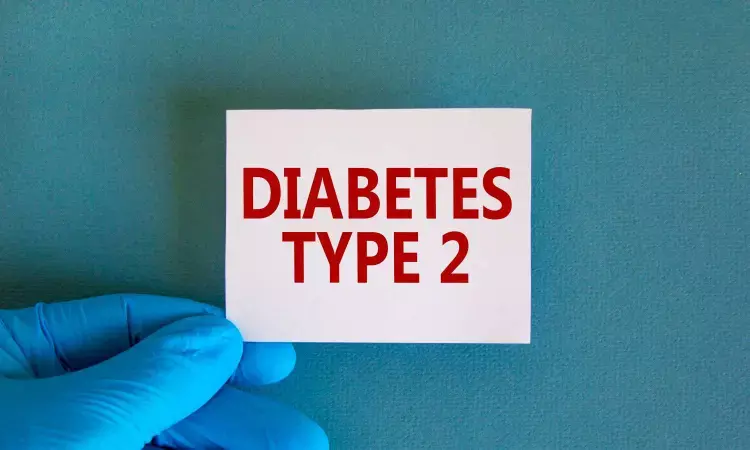- Home
- Medical news & Guidelines
- Anesthesiology
- Cardiology and CTVS
- Critical Care
- Dentistry
- Dermatology
- Diabetes and Endocrinology
- ENT
- Gastroenterology
- Medicine
- Nephrology
- Neurology
- Obstretics-Gynaecology
- Oncology
- Ophthalmology
- Orthopaedics
- Pediatrics-Neonatology
- Psychiatry
- Pulmonology
- Radiology
- Surgery
- Urology
- Laboratory Medicine
- Diet
- Nursing
- Paramedical
- Physiotherapy
- Health news
- Fact Check
- Bone Health Fact Check
- Brain Health Fact Check
- Cancer Related Fact Check
- Child Care Fact Check
- Dental and oral health fact check
- Diabetes and metabolic health fact check
- Diet and Nutrition Fact Check
- Eye and ENT Care Fact Check
- Fitness fact check
- Gut health fact check
- Heart health fact check
- Kidney health fact check
- Medical education fact check
- Men's health fact check
- Respiratory fact check
- Skin and hair care fact check
- Vaccine and Immunization fact check
- Women's health fact check
- AYUSH
- State News
- Andaman and Nicobar Islands
- Andhra Pradesh
- Arunachal Pradesh
- Assam
- Bihar
- Chandigarh
- Chattisgarh
- Dadra and Nagar Haveli
- Daman and Diu
- Delhi
- Goa
- Gujarat
- Haryana
- Himachal Pradesh
- Jammu & Kashmir
- Jharkhand
- Karnataka
- Kerala
- Ladakh
- Lakshadweep
- Madhya Pradesh
- Maharashtra
- Manipur
- Meghalaya
- Mizoram
- Nagaland
- Odisha
- Puducherry
- Punjab
- Rajasthan
- Sikkim
- Tamil Nadu
- Telangana
- Tripura
- Uttar Pradesh
- Uttrakhand
- West Bengal
- Medical Education
- Industry
Biodegradable hollow nanoscavengers can reverse insulin resistance for treating type 2 diabetes

China: A recent study published in ACS Nano found that targeting certain highly reactive molecules in the liver can reverse insulin resistance in human liver cells and diabetic mice. The findings provide a pathway toward a more long-lasting treatment.
Although diabetes is a common condition, no cure exists yet. Current therapies can manage blood sugar levels but do not address insulin resistance. Type 2 diabetes occurs when the body is no longer sensitive to insulin, which regulates blood sugar. Currently, no cure exists, and available treatments focus on managing symptoms and blood sugar levels. Some research has suggested that insulin resistance could be caused by reactive oxygen species (ROS), which are highly unstable, oxygen-based molecules primarily produced by the mitochondria or the “powerhouses of the cell.”
A class of drugs known as mitochondrial uncouplers could help inhibit ROS production at its source rather than merely cleaning up what’s already been made, as conventional, antioxidant-based treatments do. Ultrasmall platinum nanoparticles are another highly efficient ROS scavenger, though their small size causes them to be cleared from the liver too quickly. But, combining these two strategies into an all-in-one system could create a highly effective and long-lasting treatment platform. So, Jingjing Yang, Shaochun Tang, Yujun Song and colleagues wanted to design such a system using biodegradable “nano scavengers” that could potentially restore insulin sensitivity and treat type 2 diabetes.
To build the nano scavengers, the team coated a template with platinum nanoparticles and a layer of silica. Then, the template was removed to form hollow shells, loaded with a mitochondrial uncoupler and coated with a lipid bilayer. The system reduced them to water and molecular oxygen when mixed with two ROS, hydrogen peroxide (H2O2) and superoxide (O2-). In experiments using human liver cells with induced type 2 diabetes, the nano scavengers continued to clean up ROS and increase glucose uptake, suggesting that the cells’ insulin sensitivity was restored.
The researchers then injected nano scavengers intravenously into a diabetic mouse model. The constructs migrated to the liver, reducing the amount of fat present, restoring normal cellular function and returning blood glucose levels to normal. Symptoms of diabetic nephropathy were reversed nearly completely. The mice showed no signs of body weight changes or tissue or organ damage. The researchers say this work could provide an effective strategy for the long-term treatment of diabetes and other metabolic diseases.
References:- Zhibin Zhang, Dongtao Zhou, Xiaowei Luan, Xuyuan Wang, Zhenxing Zhu, Wen Luo, Jingjing Yang, Shaochun Tang, and Yujun Song ACS Nano Article ASAP DOI: 10.1021/acsnano.3c00875
Dr Kamal Kant Kohli-MBBS, DTCD- a chest specialist with more than 30 years of practice and a flair for writing clinical articles, Dr Kamal Kant Kohli joined Medical Dialogues as a Chief Editor of Medical News. Besides writing articles, as an editor, he proofreads and verifies all the medical content published on Medical Dialogues including those coming from journals, studies,medical conferences,guidelines etc. Email: drkohli@medicaldialogues.in. Contact no. 011-43720751


